6 Allium Varieties To Grow In Your Garden
Alliums are arguably one of the most recognizable garden plants due to their unique odor and taste. Gardeners thoroughly enjoy planting this addition to their garden not only for their beauty but also for their practical uses.
There are between 700-800 species of alliums including popular vegetables such as onions and garlic. They are easy to grow and not too particular when it comes to growing conditions.
However, choosing between 800 species of alliums can be an overwhelming decision to make. So we’ve helped narrow it down to the most popular vegetable and ornamental allium varieties for you to grow in your garden.
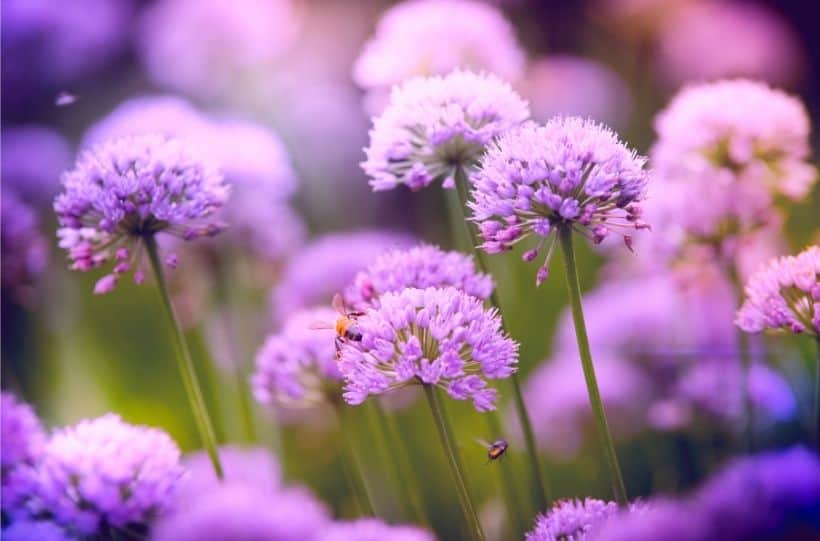
What Are Alliums?
The word ‘allium’ in Latin means garlic. Alliums are named due to a natural compound each plant contains known as organosulfides, which produces its unique odor and taste.
Alliums are perennial plants categorized into two groups, bulbous and rhizomatous. Bulbous varieties flower earlier in the year but then become dormant after the growing season. Whereas rhizomatous varieties flower later in the year for a longer time between Summer and Autumn.
Set allium varieties tend to be grown for consumption, which is classed as vegetable alliums. Whereas other alliums are grown for ornamental purposes.
However, one thing to note about alliums is that although they are edible for human consumption, they are poisonous to dogs and cats. If you have pets at home, it is advisable to not plant them in your garden or anywhere that your pets might be able to access and eat them.
Types of Alliums
Though all allium varieties can be eaten, certain types are grown specifically for consumption as they have a stronger odor and flavor. Whereas other varieties, although could be eaten, are grown specifically for their beauty and presentation.
Vegetable Alliums
All parts of alliums are edible, but usually, only the bulbs or stems are harvested. These common vegetables are easy to grow and, with the right maintenance, will produce crops every growing season.
Garlic
Garlic is best planted between March and April or in early autumn before the first frost for the following year. Each clove needs planting individually at least 10cm apart. They prefer full sunlight with well-drained soil.
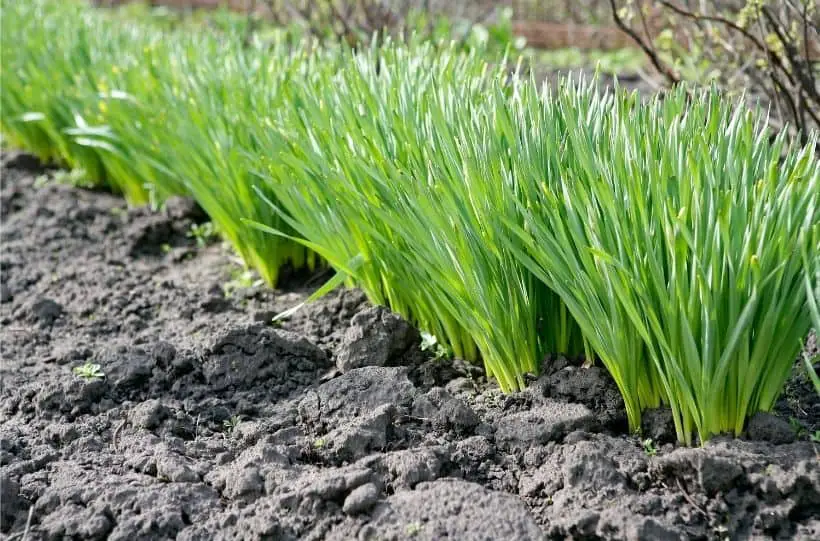
Garlic does not require regular watering. Only water when there is a dry spell as regular watering can lead to your garlic bulbs rotting.
Your garlic can be harvested in autumn once the leaves have dried and turned yellow. Carefully dig up the bulbs and leave them to dry in a cool area.
If you are wanting to continue your garlic crop for the following year, separate a bulb into individual sections and replant.
Onions
Similar to growing garlic, onion also requires spacing apart to allow enough growth room. Plant each onion plant either in early Spring or in October and November. They can either be planted directly from seeds or onion sets.
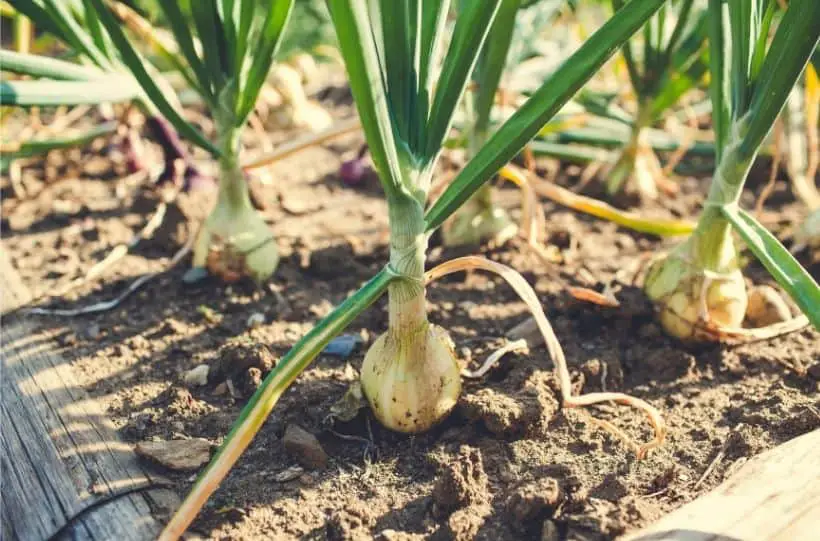
If planting from seeds, start your seeds indoors in January within growing trays. Once the seedlings have sprouted and the temperatures are warmer outdoors, they can be transferred to your garden.
Onion sets can be planted directly outdoors in Spring and Autumn. Place them below the topsoil so that each set is slightly covered.
Onions require moist soil with good drainage. Ensure to water your plants during dry periods.
Your onions are ready to harvest when the leaves are dropping and turning brown.
Chives
Though chives are classified as a herb, they are still a variety of allium. Due to their smaller size, these can be grown either indoors or outdoors.
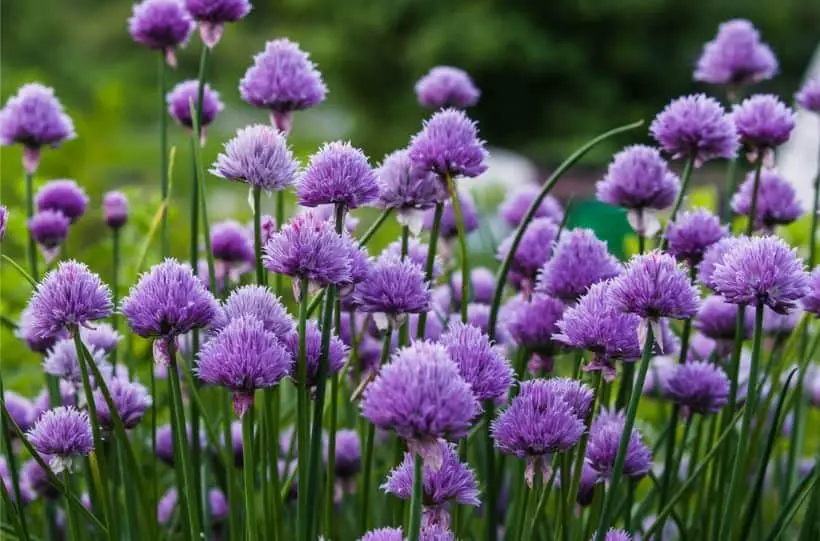
Like other vegetable alliums, they require planting in moist, well-drained soil in full sunlight. Chives are easy to grow from seeds and need planting between March and May.
Three weeks from planting, the seeds should start to germinate and can be transferred into a larger pot or the ground.
Chive plants will be large enough to harvest between June and September. Cut them with clean scissors as and when needed. When harvesting chives, you can use the flowers as a garnish, however, ensure to not eat flowering stems as they are not edible.
As chives are perennial, they will die down in winter and become dormant until the following spring.
Ornamental Alliums
Ornamental alliums are grown as perennial flowers to add color, height, and texture to your garden. Most flower between May and June, with other varieties flowering later in the growing season between July and August.
By carefully selecting a range of ornamental allium varieties, your allium plants will be on display throughout the whole growing season. As alliums are perennial plants, they will become dormant throughout the winter only to return in full bloom the following year.
Most allium varieties offer clusters of tiny flowers growing in a sphere shape on top of tall, thin stems. Ornamental alliums flower in shades of pink, white, blue, and lilac.
Moly (Jeannine)
Allium moly offers a cluster of delicate bright, star-shaped yellow flowers on the top of tall green stems. Moly can grow 50cm high and blooms during May and June.
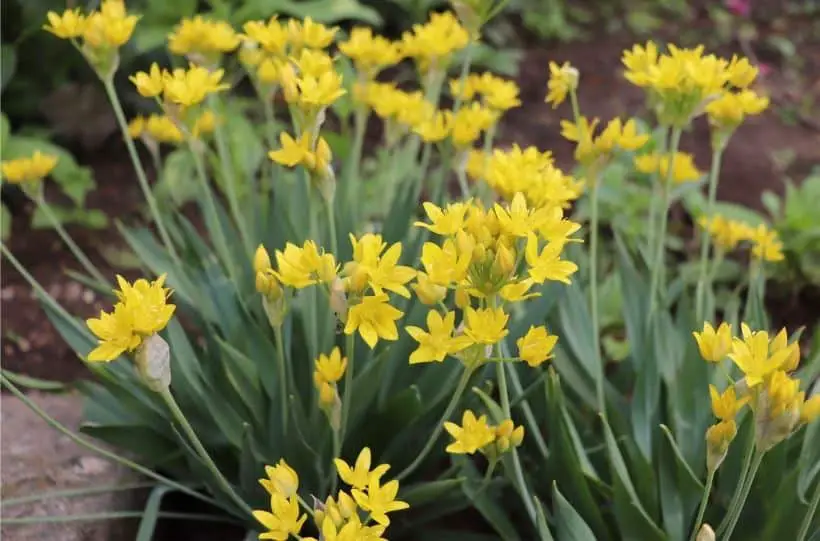
Though toxic to dogs and cats, allium moly is ideal for attracting pollinators into your garden.
This allium variety prefers full sunlight and well-drained soil. Seeds need to be sown indoors in early Spring. The seedlings can be transferred outside once they have begun sprouting and will bloom during the summer months.
Summer Beauty
A classic variety of allium, summer beauty provides tiny lilac flowers in the classic bulbous shape many alliums come in.

Summer beauty can grow up to 75cm tall and needs planting in full sunlight with well-drained soil. The flowers bloom from June to August.
Sphaerocephalon
This unique type of allium is a mix of deep red-purple on top with the bottom half a shade of light green. The flowers are in a bulbous shape and have quite a striking appearance.
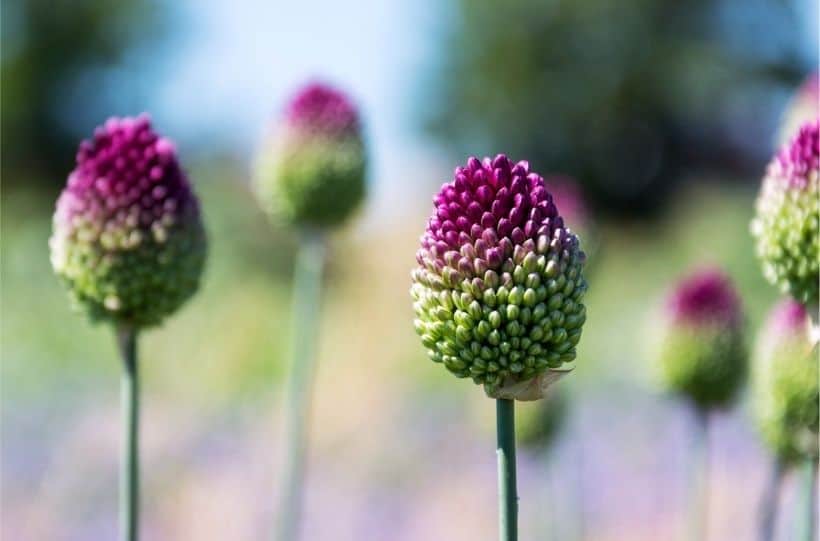
Growing well in full sunlight and with good drainage, they can grow up to 90cm tall, They are best sown indoors in early Spring ready to transfer outside once the temperatures increase and the seedlings have begun to sprout.
Sphaerocephalon blooms between May and June and is ideal for attracting pollinators into your garden due to its nectar-rich flowers.
Whether you choose to plant a vegetable or ornamental alliums, or perhaps a combination of both, they will offer a wide variety of colors, scents, and styles to your garden.
Each allium variety requires well-drained soil and access to full sunlight. They need enough space apart from one another to allow the bulbs to grow without competition for resources.
Alliums do not require too much maintenance or everyday care, so make the ideal plant for time-limited gardeners without compromising quality or beauty.
For more inspiration on edible plants you can add to your garden, take a look at these posts below:
